
Cádiz: The Jewel of Andalusia
Discover Cádiz: A historic coastal gem in Andalusia with stunning beaches, vibrant festivals, and rich cultural heritage.
Cádiz, located in the southwestern corner of Spain, is a city rich in history, culture, and natural beauty. Known as one of the oldest continuously inhabited cities in Western Europe, Cádiz offers a unique blend of ancient and modern attractions. From its golden beaches to its charming old town, the city is a treasure trove waiting to be explored. The old town of Cádiz is a labyrinth of narrow streets, picturesque squares, and historic buildings. The Cathedral of Cádiz, with its stunning Baroque and Neoclassical architecture, is a must-see. Don’t miss the Torre Tavira, the highest watchtower in the city, which offers breathtaking panoramic views. The city's well-preserved fortresses, such as Castillo de San Sebastián and Castillo de Santa Catalina, are also worth visiting for their historical significance and scenic views of the Atlantic Ocean. For those who enjoy the outdoors, Cádiz's beaches are some of the best in Spain. Playa de la Victoria is a favorite among locals and tourists alike, offering a long stretch of fine white sand and clear waters. For a more secluded experience, head to Playa de la Caleta, a small beach surrounded by historic fortresses. The city's parks, such as Parque Genovés, provide a lush retreat with their exotic plants and peaceful ambiance. Cádiz is also famous for its vibrant festivals, particularly the Carnival of Cádiz, which is one of the most famous in Spain. This event fills the city with music, color, and joy, attracting visitors from all over the world. The local cuisine is another highlight, with seafood being a staple. Try the pescaíto frito (fried fish) and the delicious tapas at one of the many traditional restaurants and bars. Shopping enthusiasts will find plenty of unique items in Cádiz's markets and boutiques. The Mercado Central is a bustling market offering fresh produce, seafood, and local specialties. Strolling through the city's streets, you'll discover artisan shops selling handmade crafts, jewelry, and souvenirs that capture the essence of Cádiz.
Local tips in Cádiz
- Visit the Torre Tavira for the best views of the city.
- Try the local seafood dishes, especially pescaíto frito.
- Explore the old town on foot to fully appreciate its charm.
- Attend the Carnival of Cádiz if visiting in February.
- Spend a day at Playa de la Victoria for a classic beach experience.
Neighbourhoods in Cádiz
Cádiz: The Jewel of Andalusia
Cádiz, located in the southwestern corner of Spain, is a city rich in history, culture, and natural beauty. Known as one of the oldest continuously inhabited cities in Western Europe, Cádiz offers a unique blend of ancient and modern attractions. From its golden beaches to its charming old town, the city is a treasure trove waiting to be explored. The old town of Cádiz is a labyrinth of narrow streets, picturesque squares, and historic buildings. The Cathedral of Cádiz, with its stunning Baroque and Neoclassical architecture, is a must-see. Don’t miss the Torre Tavira, the highest watchtower in the city, which offers breathtaking panoramic views. The city's well-preserved fortresses, such as Castillo de San Sebastián and Castillo de Santa Catalina, are also worth visiting for their historical significance and scenic views of the Atlantic Ocean. For those who enjoy the outdoors, Cádiz's beaches are some of the best in Spain. Playa de la Victoria is a favorite among locals and tourists alike, offering a long stretch of fine white sand and clear waters. For a more secluded experience, head to Playa de la Caleta, a small beach surrounded by historic fortresses. The city's parks, such as Parque Genovés, provide a lush retreat with their exotic plants and peaceful ambiance. Cádiz is also famous for its vibrant festivals, particularly the Carnival of Cádiz, which is one of the most famous in Spain. This event fills the city with music, color, and joy, attracting visitors from all over the world. The local cuisine is another highlight, with seafood being a staple. Try the pescaíto frito (fried fish) and the delicious tapas at one of the many traditional restaurants and bars. Shopping enthusiasts will find plenty of unique items in Cádiz's markets and boutiques. The Mercado Central is a bustling market offering fresh produce, seafood, and local specialties. Strolling through the city's streets, you'll discover artisan shops selling handmade crafts, jewelry, and souvenirs that capture the essence of Cádiz.
When is the best time to go to Cádiz?
Iconic landmarks you can’t miss
Catedral de la Santa Cruz de Cádiz
Discover the architectural beauty and historical significance of the Catedral de la Santa Cruz de Cádiz, a must-visit landmark in the heart of Cádiz, Spain.
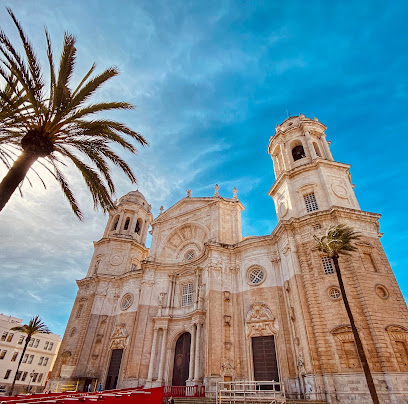
Parque Genovés
Explore the lush landscapes and tranquil beauty of Parque Genovés, a captivating botanical garden in the heart of Cádiz, Spain.
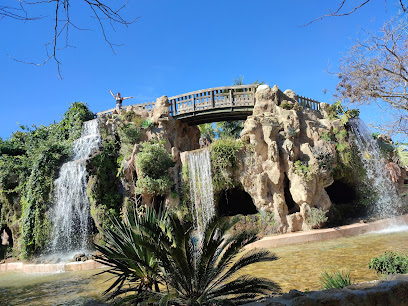
The flower market square
Explore the vibrant Plaza de las Flores in Cádiz, a historical landmark filled with colorful blooms, local culture, and delightful Andalusian architecture.
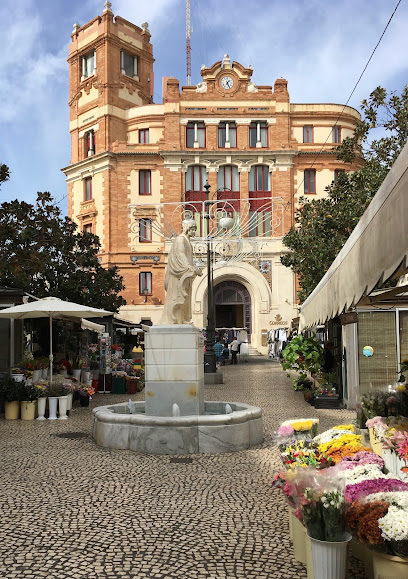
Torre Tavira
Explore Torre Tavira in Cádiz, a historical landmark offering stunning views, rich culture, and an engaging glimpse into the city's vibrant past.

Castillo de Santa Catalina
Explore the historic Castillo de Santa Catalina, a coastal fortress in Cádiz, offering stunning ocean views and a rich maritime heritage.
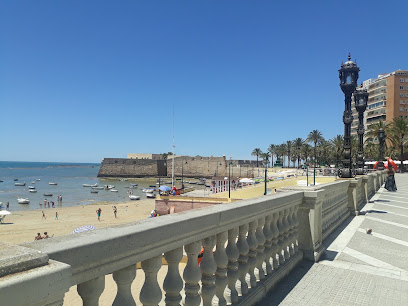
The 1812 Constitution Monument
Explore the historic 1812 Constitution Monument in Cádiz, a stunning landmark surrounded by beautiful gardens and rich cultural heritage.
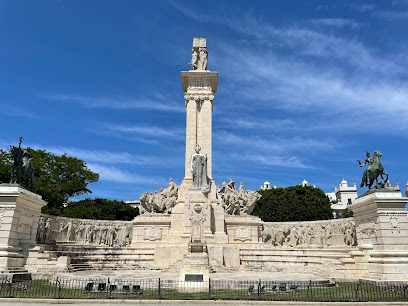
Cadiz Museum
Explore the Cádiz Museum: A rich tapestry of art, archaeology, and culture in the heart of Cádiz, showcasing the city's diverse heritage.
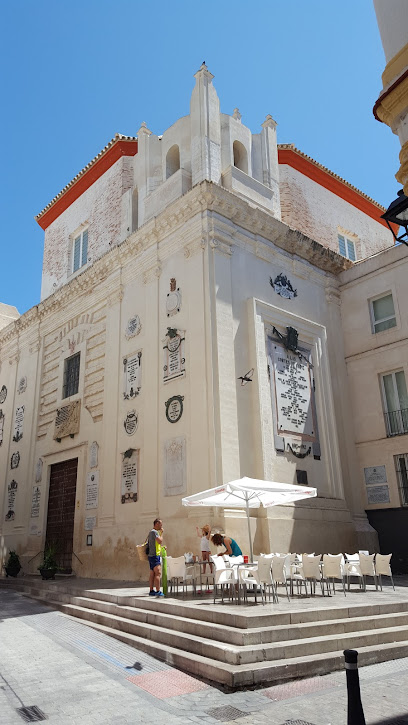
Castillo de San Marcos
Explore Castillo de San Marcos in El Puerto de Santa María, a historic castle offering stunning views, rich heritage, and a glimpse into Spain's glorious past.

Teatro Romano de Cádiz
Discover the ancient glory of the Teatro Romano de Cádiz, a historical landmark that brings the past to life with its stunning Roman architecture and rich cultural significance.

Centro histórico de Cadiz
Explore the rich history and vibrant culture of Cádiz in its captivating historic center, a treasure trove of architecture, gastronomy, and tradition.

Baluarte de la Candelaria
Discover the historical charm of Baluarte de la Candelaria, a stunning fortress in Cádiz offering breathtaking views and rich military history.
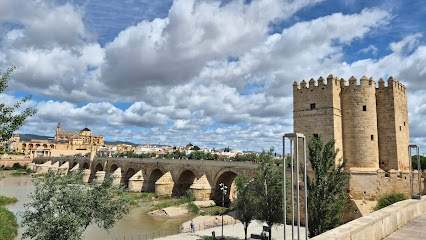
Castillo de San Sebastian
Discover the stunning Castillo de San Sebastian, a historic fortress offering breathtaking views and rich history in the beautiful city of Cádiz.
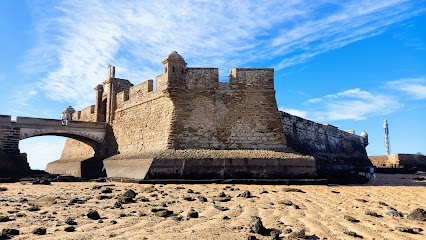
Yacimiento Arqueológico Gadir
Explore the ancient Phoenician past at Yacimiento Arqueológico Gadir in Cádiz, a must-see archaeological site revealing rich historical treasures.
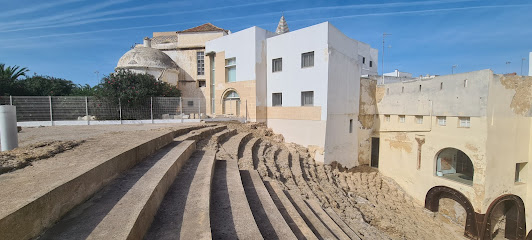
Plaza de la Candelaria
Experience the tranquility and cultural richness of Plaza de la Candelaria in the heart of Cádiz, a perfect spot for relaxation and exploration.
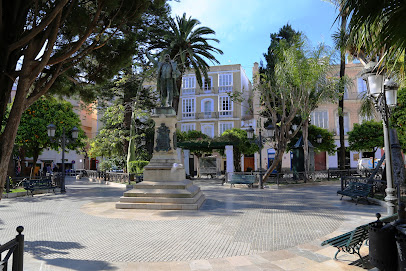
Murallas De San Carlos
Uncover the historical significance and breathtaking views at Murallas De San Carlos, Cádiz's iconic fortress overlooking the Atlantic.
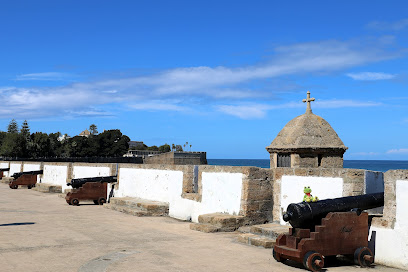
Unmissable attractions to see
Catedral de Cádiz
Explore the breathtaking Catedral de Cádiz, a stunning architectural gem with rich history and panoramic views in the heart of Cádiz, Spain.
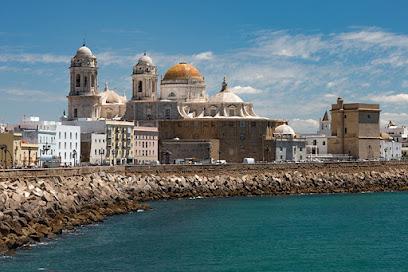
Playa de La Caleta
Experience the beauty and culture of Playa de La Caleta, a premier beach destination in Cádiz, Spain, ideal for relaxation, recreation, and local gastronomy.
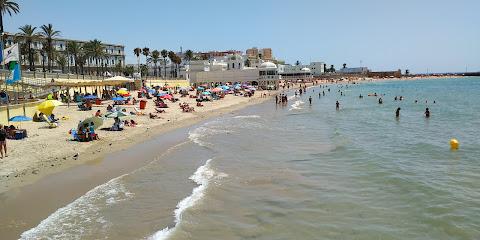
Gran Teatro Falla
Discover the architectural beauty and vibrant performances at Gran Teatro Falla, Cádiz's cultural gem that celebrates the performing arts.
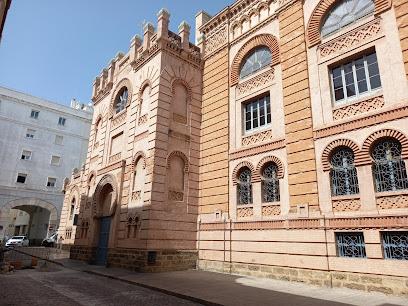
Playa de la Barrosa
Experience the stunning Playa de la Barrosa, where golden sands meet azure waters, perfect for relaxation, family fun, and savoring local culinary delights.
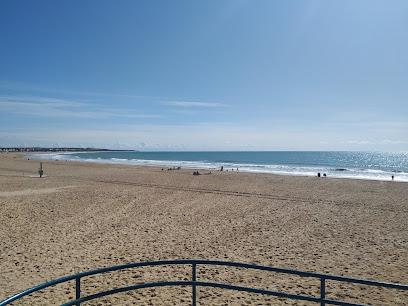
Plaza del Arenal
Discover the vibrant Plaza del Arenal in Jerez de la Frontera, a lively square filled with history, dining, and Andalusian charm.
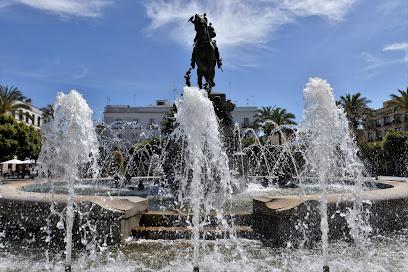
Catedral de Jerez de la Frontera / Colegiata de Nuestro Señor San Salvador
Experience the awe-inspiring beauty of Catedral de Jerez de la Frontera, a historic gem blending Gothic and Baroque architecture in the heart of Jerez.
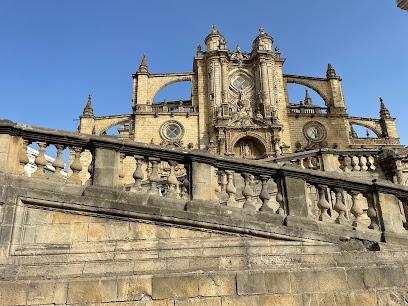
Alcázar de Jerez de la Frontera
Discover the enchanting Alcázar de Jerez de la Frontera, a historic fortress blending cultures and offering stunning architecture amidst lush gardens.
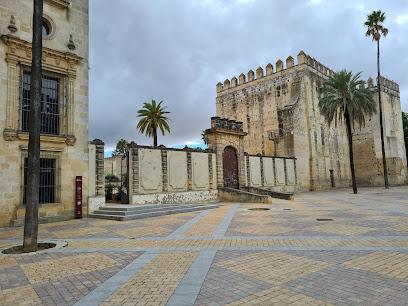
Trafalgar Lighthouse
Discover the captivating history and breathtaking views of Trafalgar Lighthouse, a must-visit destination along the stunning Cádiz coastline.
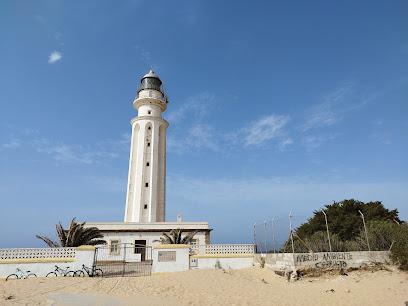
Playa de Santa María del Mar (Cádiz)
Explore Playa de Santa María del Mar, a serene beach in Cádiz, where golden sands meet azure waters for the perfect getaway.
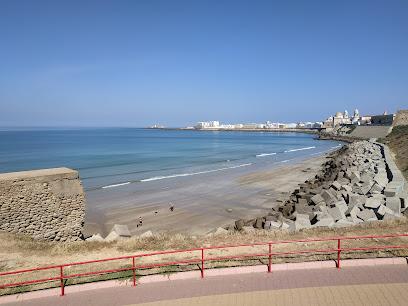
Cadiz Museum
Explore Cádiz Museum, a cultural hub showcasing the archaeological, artistic, and ethnographic heritage of Andalusia.
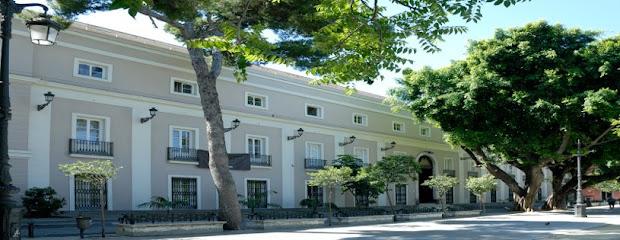
Teatro Romano de Cádiz
Explore the grandeur of the ancient world at the Teatro Romano de Cádiz, a spectacular archaeological museum in the heart of Spain's historic city.
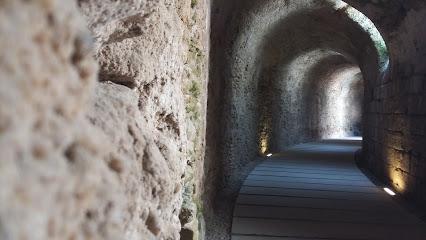
Playa de El Palmar
Experience the breathtaking beauty and vibrant atmosphere of Playa de El Palmar, a premier beach destination in Andalusia, perfect for sun, surf, and savoring local cuisine.
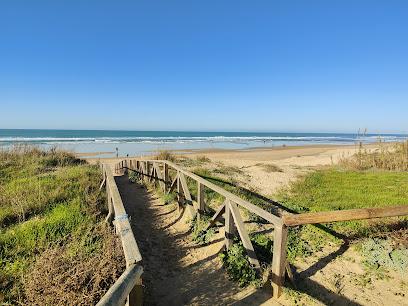
Centro histórico de Cadiz
Explore the historic center of Cádiz, where ancient history meets vibrant culture in the heart of Andalusia.
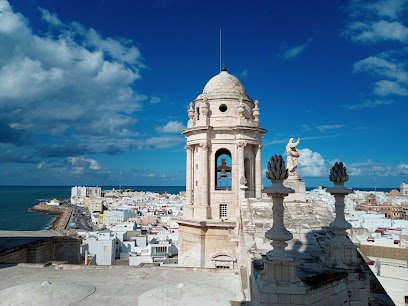
Castle vejer
Experience the historical grandeur and stunning views at the Castle of Vejer de la Frontera, a must-visit tourist attraction in Spain.
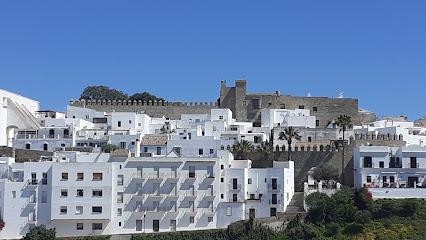
Puerto Deportivo de Sancti Petri
Discover the charm of Puerto Deportivo de Sancti Petri, a captivating marina in Chiclana de la Frontera, offering stunning views, dining, and exciting water activities.
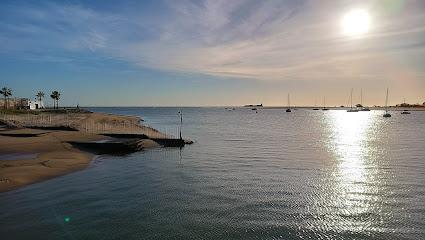
Essential places to dine
El Faro de Cádiz
Experience exquisite seafood and authentic Spanish cuisine at El Faro de Cádiz, where culinary excellence meets stunning seaside views.
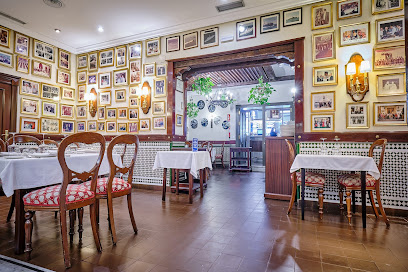
Restaurante Balandro
Experience authentic Spanish tapas and Mediterranean delights at Restaurante Balandro in Cádiz's vibrant culinary scene.
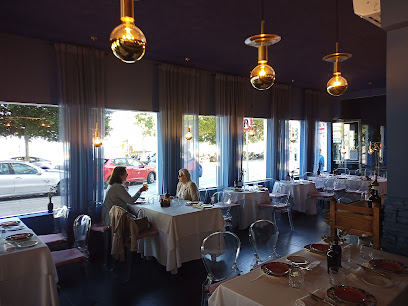
Mesón Cumbres Mayores
Experience authentic Andalusian cuisine at Mesón Cumbres Mayores, where traditional flavors meet modern hospitality in the heart of Cádiz.
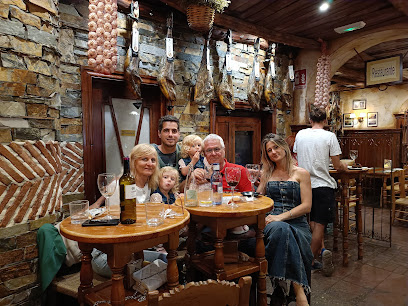
Restaurante Arteserrano
Discover exquisite Andalusian cuisine at Restaurante Arteserrano in Cádiz - where tradition meets innovation on your plate.
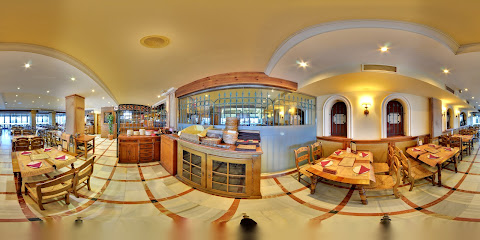
The Tapería of Columela
Experience authentic Spanish tapas at The Tapería of Columela in Cádiz - where flavor meets tradition in every dish.
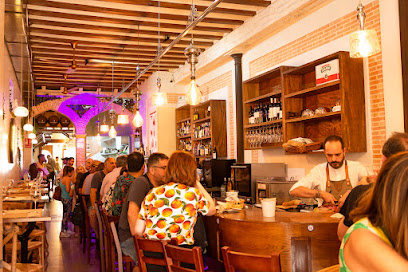
Restaurante Arsenio Manila
Experience authentic Mediterranean flavors at Restaurante Arsenio Manila in Cádiz - where every meal is a celebration.
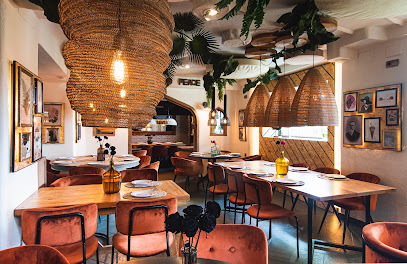
Taberna El tío de La Tiza
Experience authentic Andalusian flavors at Taberna El tío de La Tiza – a must-visit tavern in Cádiz known for its inviting ambiance and delicious tapas.
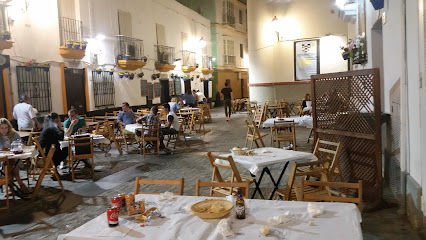
Restaurante La Marea
Experience authentic Mediterranean seafood at Restaurante La Marea in Cádiz—where every dish tells a story of coastal tradition.
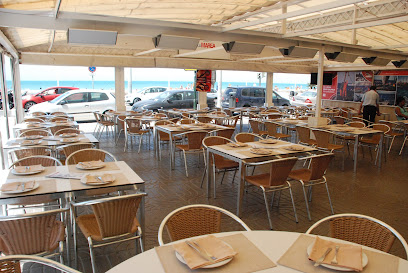
La Gorda te da de Comer
Discover authentic Andalusian flavors at La Gorda te da de Comer, a must-visit tapas bar in Cádiz offering delightful dishes and a welcoming atmosphere.
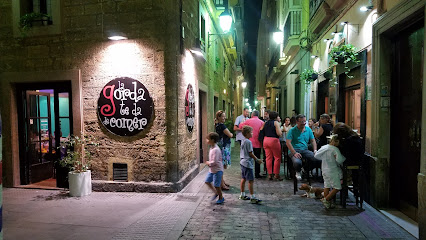
Restaurante La Isleta de la Viña
Experience authentic Mediterranean flavors and vibrant live music at Restaurante La Isleta de la Viña in Cádiz.

La Candela
Savor exquisite Mediterranean and Spanish tapas at La Candela, one of Cádiz's top-rated culinary hotspots.
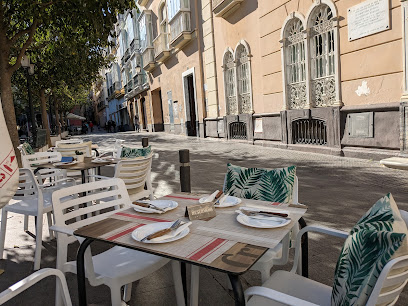
La Bodeguita de Plocia
Discover authentic Andalusian flavors at La Bodeguita de Plocia, Cádiz's vibrant tapas bar offering a delightful culinary experience.

Restaurante El Aljibe
Experience authentic Mediterranean flavors at Restaurante El Aljibe in Cádiz, where every dish tells a story of tradition and taste.
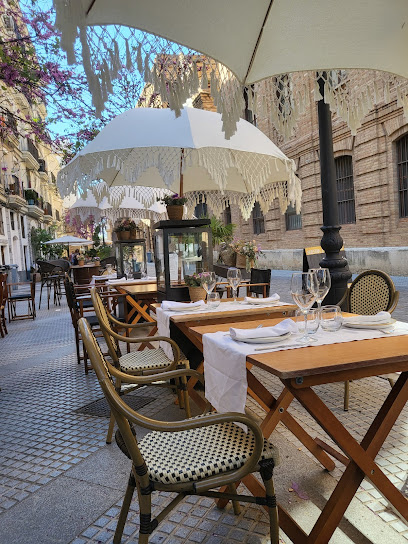
Restaurante Café Royalty - Restaurantes en Cádiz
Experience exquisite Mediterranean and Spanish cuisine at Restaurante Café Royalty in Cádiz - where culinary tradition meets modern elegance.
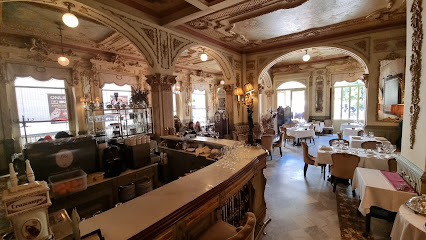
Bar La Tabernita
Experience authentic Andalusian cuisine at Bar La Tabernita, where every tapa tells a story in the heart of Cádiz.
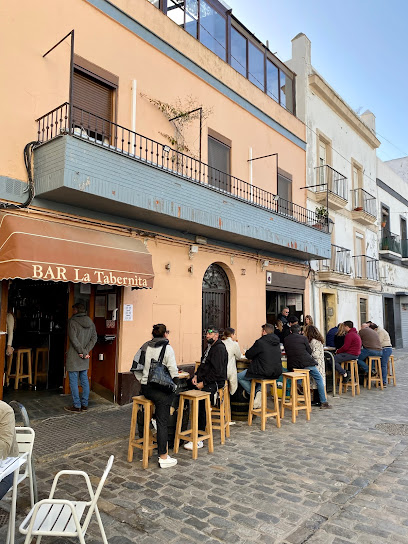
Markets, malls and hidden boutiques
El Corte Inglés Bahía de Cádiz
Discover the ultimate shopping experience at El Corte Inglés Bahía de Cádiz, featuring fashion, dining, and local charm in a stunning coastal setting.

Delité Cádiz
Discover the best of Cádiz at Delité Cádiz, a charming tea store offering exquisite teas, chocolates, and gourmet cookies in a cozy atmosphere.
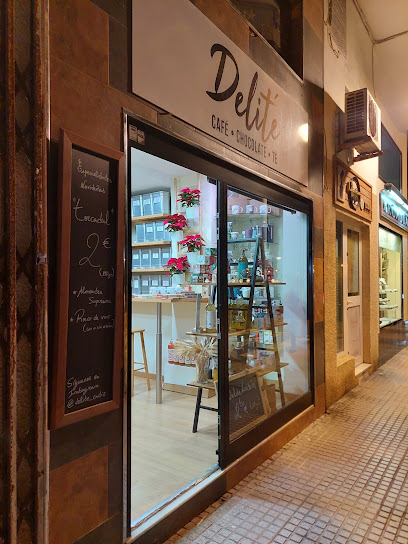
Museum-store of Cadi-Cadi
Discover unique souvenirs and local art at the Museum-store of Cadi-Cadi, a must-visit destination in Cádiz for culture lovers and travelers alike.
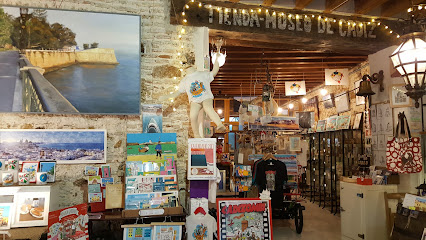
Pestana Cádiz | Tiendas de ropa online | Tiendas de ropa en Cádiz
Discover the charm of Pestana Cádiz, your go-to destination for stylish clothing and unique home goods in the heart of Cádiz.

La Tienda de La Vecina
Explore La Tienda de La Vecina in Cádiz for unique local crafts, beachwear, and artistic treasures that capture the essence of Andalusian culture.

SEPHORA ECI CADIZ
Discover luxury cosmetics, beauty supplies, and perfumes at SEPHORA ECI in Cádiz, a perfect stop for beauty lovers exploring this charming coastal city.

UNOde50 - El Corte Inglés Cádiz
Explore UNOde50 in Cádiz for unique handcrafted jewelry, watches, and novelties that capture the spirit of artistry and tradition.
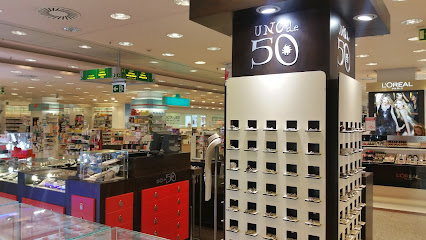
TripMilenaria Museum Store
Explore the TripMilenaria Museum Store in Cádiz for unique souvenirs, local artisan products, and a taste of Andalusian culture.

El Rincón del Cádiz Regalos
Discover unique local crafts and souvenirs at El Rincón del Cádiz Regalos, a charming gift shop in the heart of Cádiz's Plaza de las Flores.

Mechanic (Authentic Shop)
Explore the Authentic Mechanic Shop in Cádiz for unique men's fashion and a taste of local style amidst the city's vibrant culture.
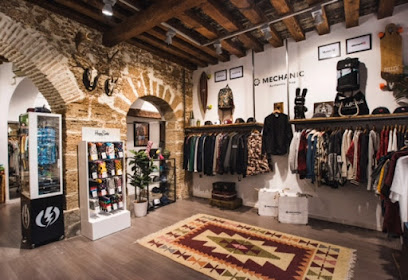
Erase una vez...
Discover the whimsical charm of 'Erase una vez...', a delightful gift shop in Cádiz, offering unique gifts and colorful balloons for every occasion.
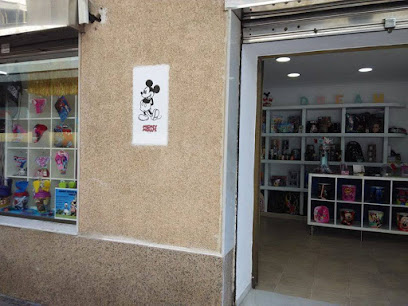
Pandora ES
Discover exquisite jewelry at Pandora ES in Cádiz, where elegance meets craftsmanship in a vibrant shopping experience.

Parfois
Explore the stylish world of Parfois in Cádiz, where fashion accessories, clothing, and jewelry redefine your shopping experience.
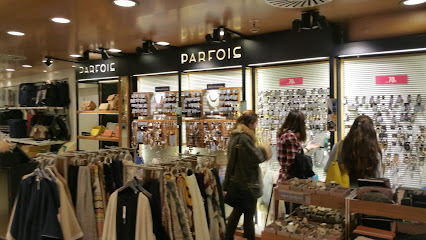
ESENCIAS HAPPY
Visit Esencias Happy in Cádiz for unique gifts and local crafts that embody the spirit of your travels and make perfect souvenirs.

Marisol Zamora
Explore Marisol Zamora, a charming store in Cádiz offering unique local crafts and artisanal products that capture the essence of Andalusian culture.
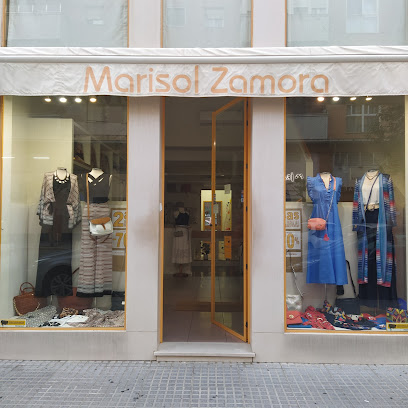
Essential bars & hidden hideouts
Bar La Tabernita
Experience the vibrant culinary scene of Cádiz at Bar La Tabernita, where traditional tapas meet a lively atmosphere and local wines.
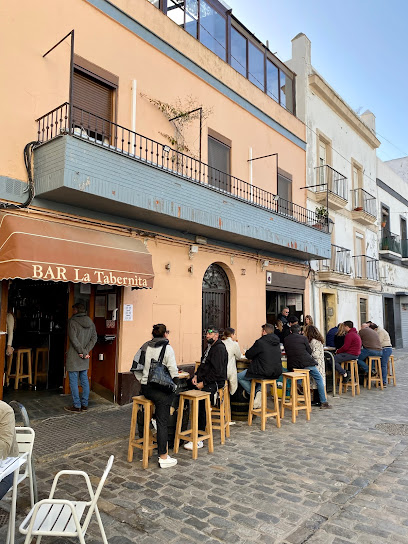
Bar Nono
Experience authentic Andalusian flavors at Bar Nono, Cádiz's beloved tapas bar offering a delightful array of gluten-free options.
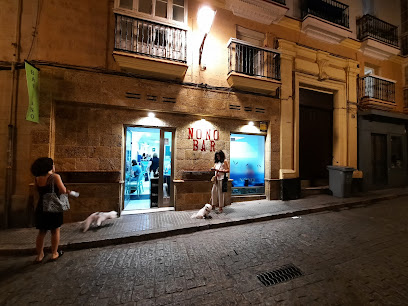
Muelle Uno Cafe & Bar
Discover the charm of Cádiz at Muelle Uno Cafe & Bar, where local flavors meet stunning waterfront views in a relaxed atmosphere.
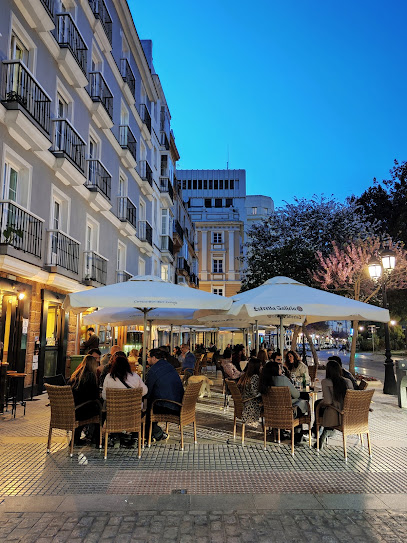
PELICAN MÚSICAFÉ
Discover the rhythm of Cádiz at Pelican Música Café – a vibrant bar and art café showcasing local culture through flamenco and art.
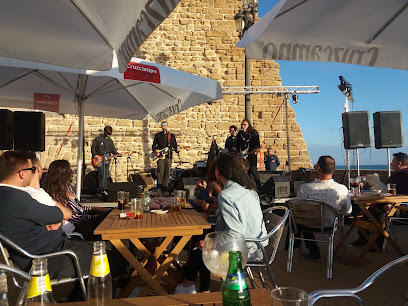
Bar El Veedor
Discover Bar El Veedor in Cádiz: Your go-to destination for authentic tapas and a lively local atmosphere.
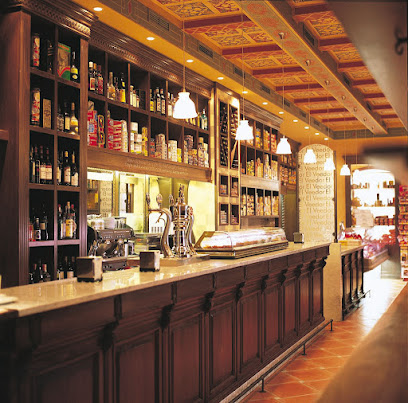
Woodstock Bar - Cádiz
Discover the lively atmosphere of Woodstock Bar in Cádiz, where live music and a friendly vibe create unforgettable nights.
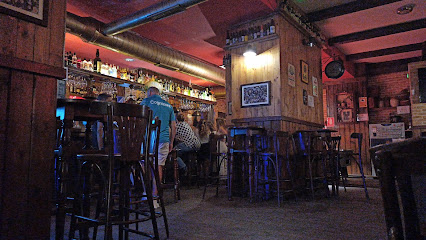
Bar Recreo Chico
Discover the essence of Cádiz at Bar Recreo Chico, where authentic tapas and a vibrant atmosphere create unforgettable moments.
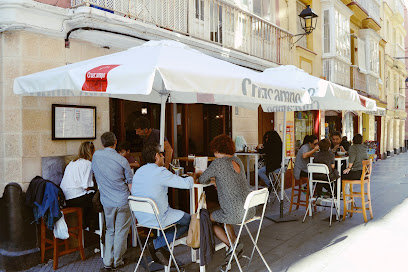
O'Connell's
Experience the warmth of Irish hospitality at O'Connell's, a charming pub in Cádiz offering authentic dishes and a vibrant atmosphere.
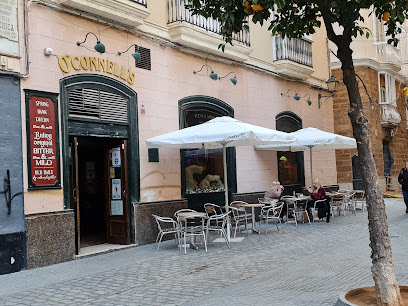
EVOHÉ
Experience the vibrant nightlife at EVOHÉ, Cádiz's premier pub and cocktail bar featuring live piano music and exquisite drinks.
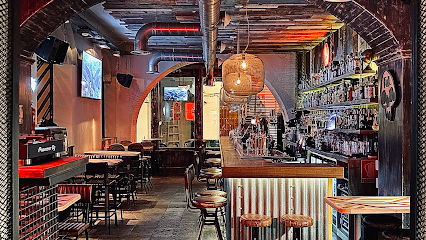
Rollin'Rock Pub
Discover the lively atmosphere of Rollin'Rock Pub in Cádiz, where locals and tourists come together to enjoy great drinks and vibrant nightlife.
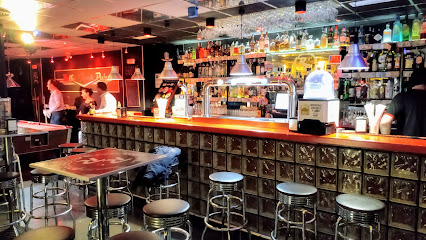
Habana Café
Discover the vibrant nightlife of Cádiz at Habana Café, a lively bar with exquisite cocktails and a welcoming atmosphere perfect for tourists.
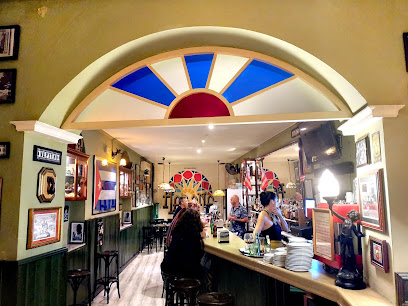
Pub Offside - Cádiz
Discover the lively and welcoming Pub Offside in Cádiz, your go-to destination for local drinks and a vibrant nightlife experience.

Bar Chupiteria - Cádiz
Discover the vibrant nightlife at Bar Chupiteria, Cádiz's hotspot for creative shots and a lively atmosphere that captures the essence of local culture.
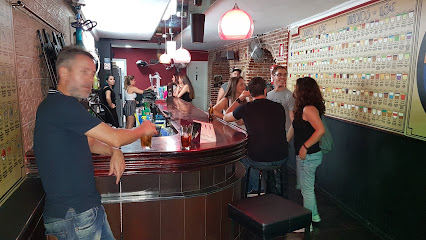
Savage Bar
Experience the vibrant nightlife of Cádiz at Savage Bar, where live piano music meets a welcoming atmosphere and affordable drinks.
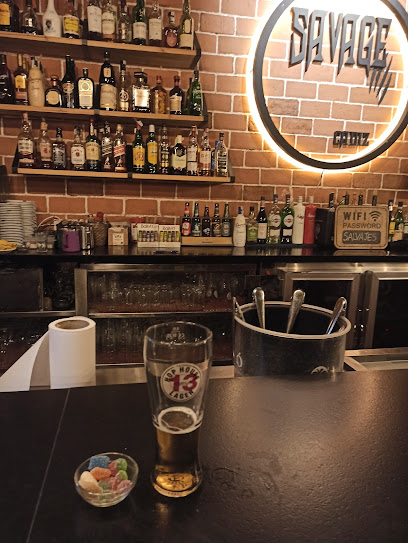
Bar Gol - Cádiz
Discover the vibrant flavors of Cádiz at Bar Gol, where local tapas and refreshing drinks await in a charming atmosphere.
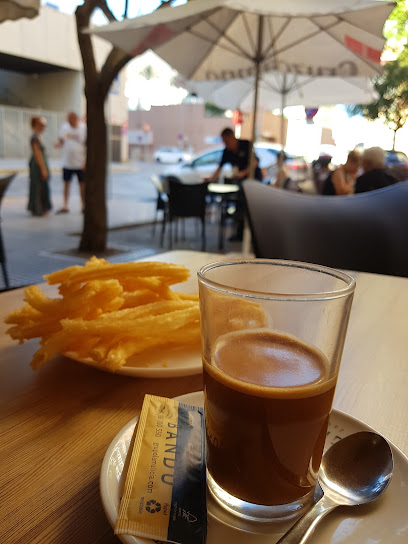
Local Phrases
-
- HelloHola
[oh-lah] - GoodbyeAdiós
[ah-dee-ohs] - YesSí
[see] - NoNo
[noh] - Please/You're welcomePor favor/De nada
[por fah-bor/deh nah-dah] - Thank youGracias
[grah-thyahs] - Excuse me/SorryPerdón/Lo siento
[pehr-dohn/loh see-ehn-toh] - How are you?¿Cómo estás?
[koh-moh ehs-tahs] - Fine. And you?Bien. ¿Y tú?
[byehn. ee too] - Do you speak English?¿Hablas inglés?
[ah-blahs een-glays] - I don't understandNo entiendo
[noh ehn-tee-ehn-doh]
- HelloHola
-
- I'd like to see the menu, pleaseMe gustaría ver la carta, por favor
[meh goos-tah-ree-ah behr lah kahr-tah, por fah-bor] - I don't eat meatNo como carne
[noh koh-moh kahr-neh] - Cheers!¡Salud!
[sah-lood] - I would like to pay, pleaseMe gustaría pagar, por favor
[meh goos-tah-ree-ah pah-gahr, por fah-bor]
- I'd like to see the menu, pleaseMe gustaría ver la carta, por favor
-
- Help!¡Ayuda!
[ah-yoo-dah] - Go away!¡Vete!
[veh-teh] - Call the Police!¡Llama a la policía!
[yah-mah ah lah poh-lee-see-ah] - Call a doctor!¡Llama a un médico!
[yah-mah ah oon meh-dee-koh] - I'm lostEstoy perdido
[ehs-toy pehr-dee-doh] - I'm illEstoy enfermo
[ehs-toy ehn-fehr-moh]
- Help!¡Ayuda!
-
- I'd like to buy...Quisiera comprar...
[kee-see-eh-rah kohm-prahr] - I'm just lookingSolo estoy mirando
[soh-loh ehs-toy mee-rahn-doh] - How much is it?¿Cuánto cuesta?
[kwan-toh kwehs-tah] - That's too expensiveEs demasiado caro
[ehs deh-mah-syah-doh kahr-oh] - Can you lower the price?¿Puedes bajar el precio?
[pweh-dehs bah-hahr ehl pree-see-oh]
- I'd like to buy...Quisiera comprar...
-
- What time is it?¿Qué hora es?
[keh o-rah ehs] - It's one o'clockEs la una
[ehs lah oo-nah] - Half past (10)Las diez y media
[lahs dyehs ee meh-dyah] - MorningMañana
[mah-nyah-nah] - AfternoonTarde
[tahr-deh] - EveningNoche
[noh-cheh] - YesterdayAyer
[ah-yehr] - TodayHoy
[oy] - TomorrowMañana
[mah-nyah-nah] - 1Uno
[oo-noh] - 2Dos
[dohs] - 3Tres
[trehs] - 4Cuatro
[kooah-troh] - 5Cinco
[theen-koh] - 6Seis
[seh-ees] - 7Siete
[syeh-teh] - 8Ocho
[oh-choh] - 9Nueve
[nweh-veh] - 10Diez
[dyehs]
- What time is it?¿Qué hora es?
-
- Where's a/the...?¿Dónde está...?
[dohn-deh ehs-tah] - What's the address?¿Cuál es la dirección?
[kwal ehs lah dee-rehk-syohn] - Can you show me (on the map)?¿Puedes mostrarme (en el mapa)?
[pweh-dehs mohs-trar-meh (ehn ehl mah-pah)] - When's the next (bus)?¿Cuándo es el próximo (autobús)?
[kwan-doh ehs ehl proh-ksee-moh (ow-toh-boos)] - A ticket (to ....)Un billete (a ...)
[oon bee-yeh-teh (ah ...)]
- Where's a/the...?¿Dónde está...?
History of Cádiz
-
Cádiz is considered the oldest continuously inhabited city in Western Europe, with its origins tracing back to approximately 1100 BC. It was founded by the Phoenicians from Tyre, who named it Gadir, meaning 'enclosure' or 'fortress'. This strategic location enabled the Phoenicians to control maritime trade routes in the Atlantic and the Mediterranean.
-
During the Roman period, Cádiz, known as Gades, flourished as a major port and naval base. The city became part of the Roman province of Hispania Ulterior. Significant Roman structures, such as the theater of Cádiz, remain as testimonies to this prosperous period. Cádiz's strategic location made it an essential hub for the Roman Empire's trade and military operations.
-
Following the decline of the Roman Empire, Cádiz came under Visigothic control in the 5th century. In the early 8th century, the city was conquered by the Moors, who introduced significant architectural, cultural, and technological advancements. Under Moorish rule, Cádiz was known as Qādis and became an important port for trade between the Iberian Peninsula and North Africa.
-
In 1262, Alfonso X of Castile recaptured Cádiz from the Moors, integrating it into the Kingdom of Castile. The city gained prominence during the Age of Exploration in the 15th and 16th centuries. Christopher Columbus embarked on his second and fourth voyages to the Americas from Cádiz, further establishing the city's importance as a departure point for New World expeditions.
-
The 17th and 18th centuries marked the Golden Age of Cádiz. The city became the principal port for trade with the Americas, surpassing Seville. The wealth generated from the transatlantic trade led to the construction of grandiose buildings and fortifications, such as the Cathedral of Cádiz and the city's defensive walls. Cádiz's prosperity attracted merchants, artists, and thinkers, making it a vibrant cultural hub.
-
During the War of Spanish Succession (1701-1714), Cádiz was a focal point due to its strategic importance. The city withstood a siege by Anglo-Dutch forces in 1702. Despite the conflict, Cádiz continued to thrive as a commercial center. The resilience of its inhabitants during the siege is commemorated in local history and folklore.
-
In the early 19th century, Cádiz played a crucial role in the Spanish War of Independence against Napoleonic France. The city hosted the Cádiz Cortes, the national assembly that drafted Spain's first liberal constitution in 1812. Known as 'La Pepa,' the constitution established principles of parliamentary sovereignty and individual rights, influencing future democratic movements across Europe and Latin America.
-
In the 20th and 21st centuries, Cádiz has continued to develop while preserving its rich cultural heritage. The city's annual carnival, one of the oldest and most famous in Spain, showcases its vibrant traditions and community spirit. Modern Cádiz blends historical landmarks with contemporary life, offering visitors a unique glimpse into its storied past and enduring cultural significance.
Cádiz Essentials
-
Cádiz is located in the Andalusian region of Spain. The nearest major airport is Jerez Airport (XRY), approximately 40 kilometers away. Alternatively, you can fly into Seville Airport (SVQ), which is about 120 kilometers away. From either airport, you can take a train, bus, or taxi to reach Cádiz. Direct trains from Seville to Cádiz are frequent and take about 1.5 hours. Additionally, buses connect various Spanish cities to Cádiz, offering a scenic route through the Andalusian countryside.
-
Cádiz is a compact city with many attractions within walking distance. For longer trips, the local bus network, operated by Consorcio de Transportes Bahía de Cádiz, is efficient and affordable. Taxis are readily available and relatively inexpensive. For a unique experience, consider taking a catamaran from Cádiz to nearby towns such as El Puerto de Santa María or Rota. Renting a bicycle is also a popular and eco-friendly way to explore the city.
-
The official currency in Spain is the Euro (EUR). Credit and debit cards are widely accepted in Cádiz, including in restaurants, hotels, and shops. However, it is advisable to carry some cash for small purchases, especially in local markets and smaller establishments. ATMs are plentiful, and you can easily withdraw cash if needed.
-
Cádiz is generally a safe city for tourists. However, it is wise to take standard precautions. Avoid displaying valuables openly and be cautious in crowded areas, especially during festivals and events. While Cádiz does not have specific high-crime areas targeting tourists, it is always best to stay vigilant and aware of your surroundings. The La Viña neighborhood, known for its nightlife, can get crowded, so keep an eye on your belongings.
-
In case of emergency, dial 112 for immediate assistance. This number connects you to police, fire, and medical services. The main hospital in Cádiz is Hospital Universitario Puerta del Mar, which provides comprehensive medical services. Pharmacies are widely available, and many have 24-hour service. It is advisable to have travel insurance that covers medical emergencies.
-
Fashion: Do dress comfortably but modestly, especially when visiting religious sites. Avoid overly revealing clothing. Religion: Do respect local customs and traditions. Always cover your shoulders and knees when entering churches. Public Transport: Do be courteous and offer your seat to elderly passengers. Don't eat or drink on public transport. Greetings: Do greet people with a friendly 'Hola' or 'Buenos días'. A handshake is common, and in more familiar settings, a kiss on each cheek is customary. Eating & Drinking: Do try local delicacies like tapas and fresh seafood. Don’t rush your meals; dining is a leisurely activity in Cádiz.
-
To experience Cádiz like a local, visit the Mercado Central de Abastos, where you can buy fresh seafood and local produce. Take a stroll through the historic neighborhoods of El Pópulo and La Viña to soak in the local culture. Attend a flamenco show to experience traditional Andalusian music and dance. Don't miss out on Cádiz’s beautiful beaches, such as La Caleta and Playa de la Victoria, which are popular spots for locals and tourists alike.
Trending Landmark in Cádiz
-
Catedral de la Santa Cruz de Cádiz
-
Parque Genovés
-
The flower market square
-
Torre Tavira
-
Castillo de Santa Catalina
-
The 1812 Constitution Monument
-
Cadiz Museum
-
Castillo de San Marcos
-
Teatro Romano de Cádiz
-
Centro histórico de Cadiz
-
Baluarte de la Candelaria
-
Castillo de San Sebastian
-
Yacimiento Arqueológico Gadir
-
Plaza de la Candelaria
-
Murallas De San Carlos
Nearby Cities to Cádiz
-
Things To Do in Casemates Square
-
Things To Do in Gibraltar
-
Things To Do in Main Street
-
Things To Do in Moorish Castle
-
Things To Do in Queensway Quay Marina
-
Things To Do in Tangier
-
Things To Do in Alameda Botanic Gardens
-
Things To Do in Catalan Bay
-
Things To Do in St. Michael's Cave
-
Things To Do in Gorham's Cave Complex
-
Things To Do in Europa Point
-
Things To Do in Seville
-
Things To Do in Huelva
-
Things To Do in Ronda
-
Things To Do in Asilah



















